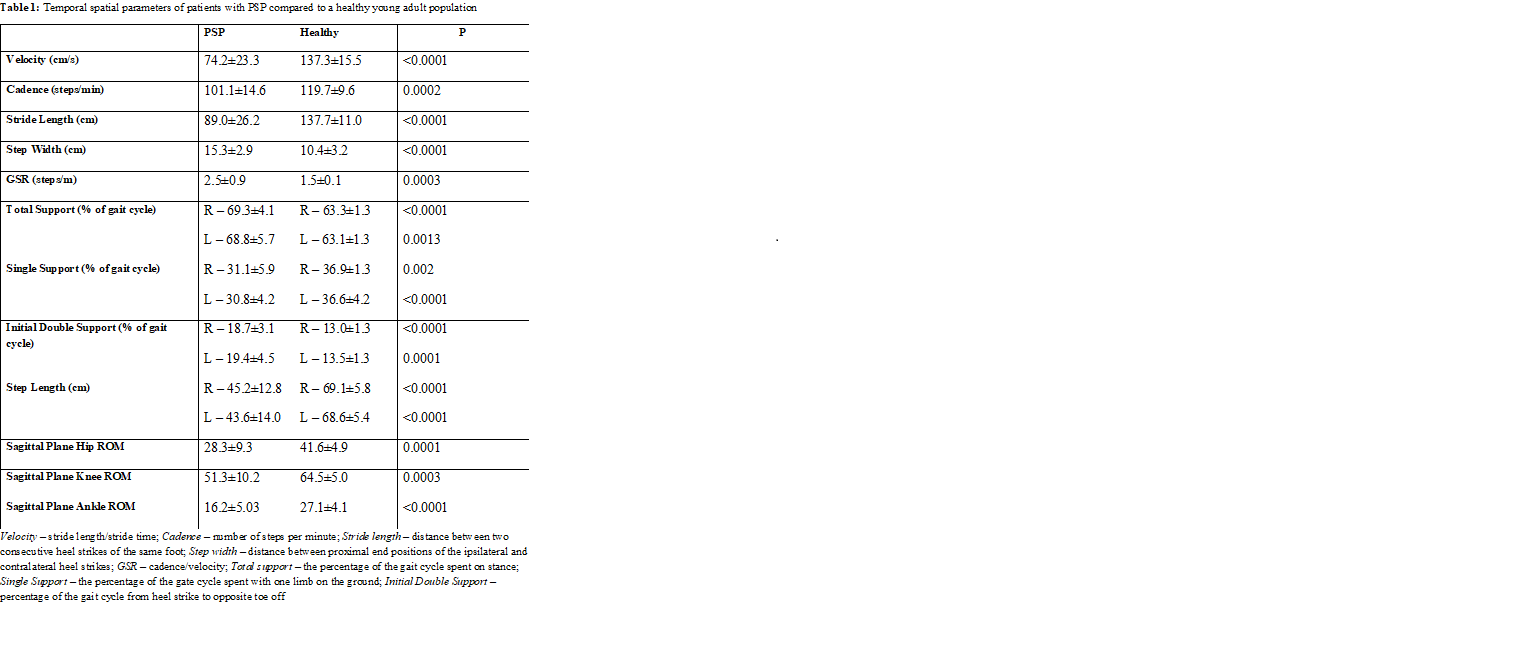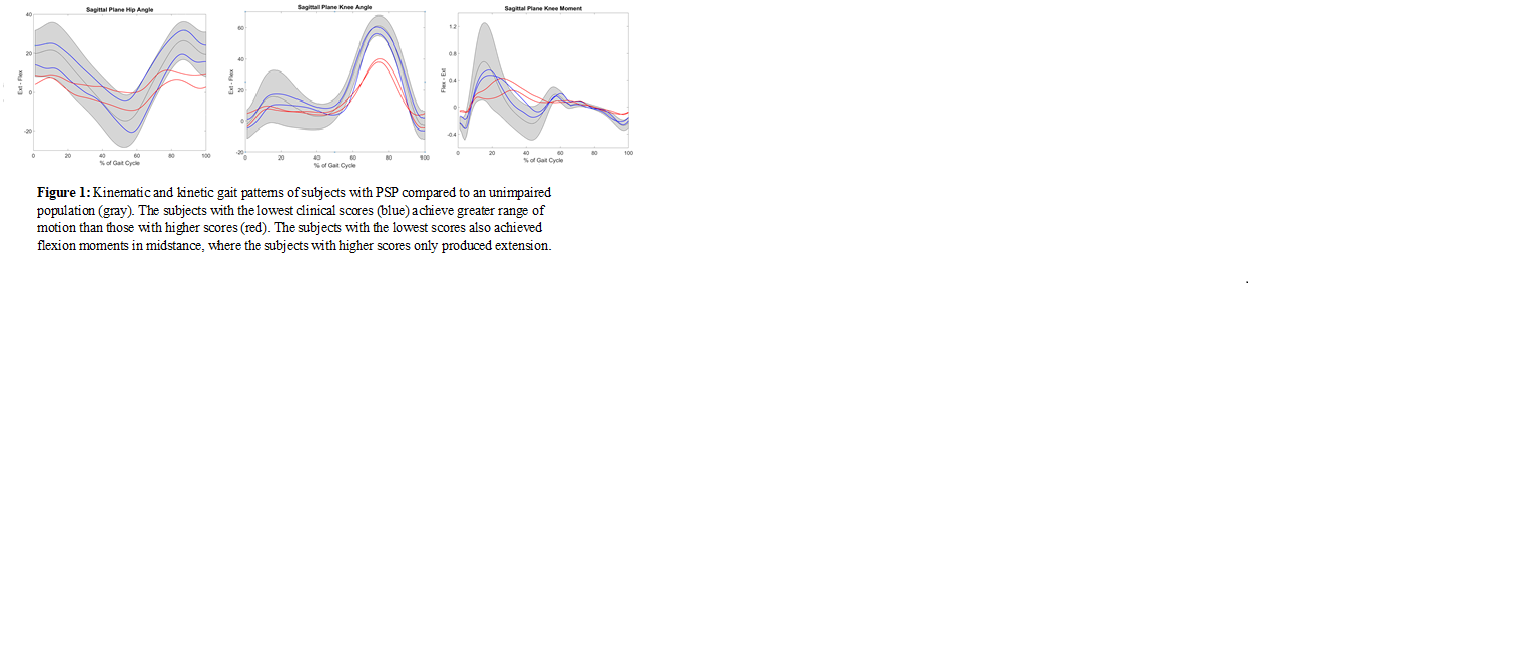Category: Neurophysiology (Non-PD)
Objective: Evaluate gait abnormalities in progressive supranuclear palsy (PSP) with three-dimensional motion analysis.
Background: PSP is associated with complex, disabling gait and balance abnormalities that occur early in the disease course. Neurologists rely on physical exam which may have limitations especially early in the disease course causing a delay in diagnosis. Lab based objective measurement of gait abnormalities can help diagnosis, track treatment response and validate/standardize body worn devices.
Method: Forty-one retroreflective markers area applied to all bony prominences and segments of the body according to the modified Helen-Hayes marker set. Subjects walk bare foot on a 10-meter walkway at self-selected speed, three trials are performed as motion is recorded with 10 cameras at 120Hz. Ground reaction forces are calculated with 5 force plates. Joint kinematics, kinetics and temporal-spatial parameters of velocity, cadence, stride length, step width, gait stability ratio (GSR), step length, and length of gait phases including single limb support, initial double limb support, and total support were calculated from the marker data and normalized to body mass and compared with normal controls.
Results: All subjects met the 2017 Movement Disorder Society criteria for PSP; Richardson’s Syndrome (PSP-RS, n=11), Parkinsonism (PSP-P, n=2), speech and language (PSP-SL, n=2), and corticobasal syndrome (PSP-CBS, n=1). Motor scores ranged from 20 to 85 on unified Parkinson’s disease rating scale III and 24 to 58 on PSP rating scale. Patients with PSP had a significantly slower velocity, cadence (step/min), stride and step lengths, reduced single support and increased double/total support and step widths. Gait stability ratio (steps/meter), an indicator of walking instability was higher than normal, indicating a greater proportion of the walking cycle in contact with the floor suggestive of imbalance (table 1). Patients had reduced sagittal range of motion at the hip and knee despite absence of orthopedic issues, and these changes were significant between PSP patients with mild and severe disease (figure 1).
Conclusion: Gait parameters in PSP patients distinguish them from controls and vary between patients with different disease severity. Objective lab-based motion analysis has the potential to serve as a measure of disease progression, response to therapy and early diagnosis. This requires validation in larger cohorts.
To cite this abstract in AMA style:
F. Ali, S. Loushin, K. Josephs, K. Kaufman, J. Whitwell. Gait and motion analysis in Progressive Supranuclear Palsy [abstract]. Mov Disord. 2020; 35 (suppl 1). https://www.mdsabstracts.org/abstract/gait-and-motion-analysis-in-progressive-supranuclear-palsy/. Accessed December 30, 2025.« Back to MDS Virtual Congress 2020
MDS Abstracts - https://www.mdsabstracts.org/abstract/gait-and-motion-analysis-in-progressive-supranuclear-palsy/


